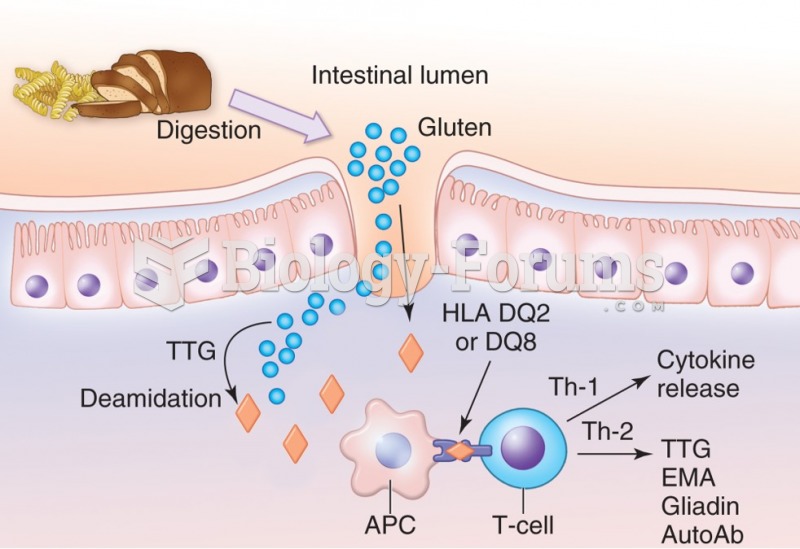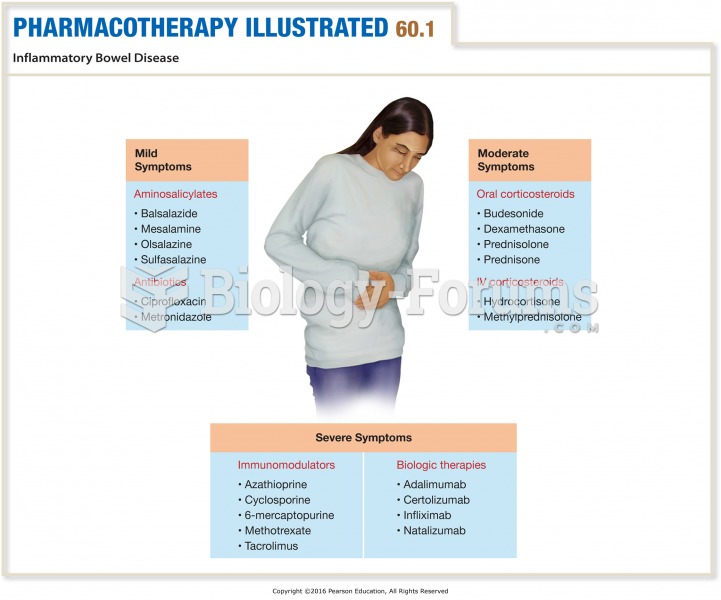|
|
|
Of the estimated 2 million heroin users in the United States, 600,000–800,000 are considered hardcore addicts. Heroin addiction is considered to be one of the hardest addictions to recover from.
There are immediate benefits of chiropractic adjustments that are visible via magnetic resonance imaging (MRI). It shows that spinal manipulation therapy is effective in decreasing pain and increasing the gaps between the vertebrae, reducing pressure that leads to pain.
The most common childhood diseases include croup, chickenpox, ear infections, flu, pneumonia, ringworm, respiratory syncytial virus, scabies, head lice, and asthma.
Warfarin was developed as a consequence of the study of a strange bleeding disorder that suddenly occurred in cattle on the northern prairies of the United States in the early 1900s.
This year, an estimated 1.4 million Americans will have a new or recurrent heart attack.
 Pathophysiology of celiac disease. In susceptible individuals, gluten-containing foods are digested, ...
Pathophysiology of celiac disease. In susceptible individuals, gluten-containing foods are digested, ...
 Patients with celiac disease must maintain a gluten-free diet. Many gluten-free items are widely ...
Patients with celiac disease must maintain a gluten-free diet. Many gluten-free items are widely ...





